The Cereals & Pulses - Nutritional Information
. We give you below some nutritional information on various cereals used in the recipes in our web site.
RICE- அரிசி- Oryza sativa
There are some 8000different types of rice
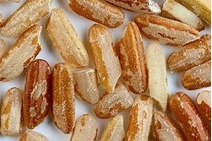
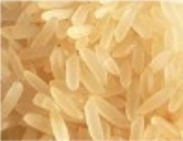
Unpolished Brown rice Polished Rice
Tamil: Arisi - அரிசி (cooked rice is choru or saatham - சோறு / சாதம்))
Rice is a staple food for large part of the world’s population especially Latin American, East, South and South-eastern Asia and is the second most consumed cereal grain second to only maize.
Nutritional values:
The chief consumption of rice is as a food substance, but it should never be forgotten that the large and continued consumption of the white, polished rice is likely to be injurious to the health. The nations of which rice is the staple diet eat it unpolished as a rule, when it is brownish and less attractive to the eye, but much more nutritious as well as cheaper. Having no laxative qualities, rice forms a light and digestible food for those in whom there is any tendency to diarrhoea or dysentery, but it contains less potash and vegetable acids than potatoes.
Brown rice is rich in vitamins B1, B2, B3 and B6, as well as manganese, iron, selenium, magnesium, phosphorus and trace minerals. Also, brown rice is a source of good quality proteins (in terms of amino acid quantity) and gamma-oryzanol (an extract of rice bran oil that has been used to treat digestive, menopausal and cholesterol problems)
Health benefits:
Comparable to whole wheat, brown rice is quite nutritious as far as calories, vitamins and minerals are concerned.
Protein 8.6% and, Fibre content 3.5%
Kanji is an easy-to-digest rice dish that is good for cleansing or when you have flu like cold.
Caution:
Brown rice contains moderate amounts of oxalate (in the bran component) and those with a history of calcium oxalate-containing kidney stones should limit their consumptions.
For rice recipes - Click here
WHEAT- கோதுமை - Triticum aestivum
Wheat is a commonly used item everywhere in the world in some form or other.
Nutritional values:
Please note that wheat products such as pasta, noodles, breads, and biscuits use flour that undergoes a process in which 60% of wheat grain is removed. Of this 60% lost are the most nutritious aspects of the wheat : the bran and the germ and as a result more than 50% of the B vitamins, folic acid, zinc, copper, phosphorous, calcium and iron are removed!
Wholemeal wheat supplies the following nutrition:
Good supply of dietary fibre and manganese, Vitamins B1, B2, B3, B5, B6 and E and folic acid plus calcium, phosphorus, zinc, copper, protein, magnesium, manganese and iron.
Wheat germ is the vitamin and mineral rich embryo of the wheat kernel that is removed during the refining process to make the "white" wheat flour.
Health benefits:
Wholemeal wheat provides the following benefits:
- Reduction in the incidence of colonic cancer
- Reduction in the risk of breast cancer (as it decreases blood oestrogen > a promoter of breast cancer)
- Promotion of regular bowel function and also reduces the incidence of diverticular disease
PULSES, GRAMS and BEANS - பருப்பு, தானிய வகைகள்
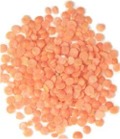
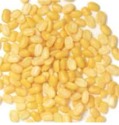
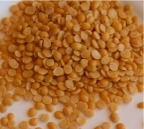
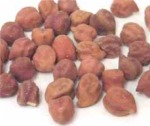
Mysore dhal Green gram Toor dhal Bengal gram
Pulses grams and beans are leguminous crops providing various kind of grains used for food and animal feed. They play a role in crop rotation due to their ability to fix nitrogen in the soil. They are important food crops due to their high protein and essential amino acids content. They are the most important source of vegetable protein in almost all countries. Their use ranges from baby food to delicacies of the rich and poor. These include varieties of lentils, varieties of grams and varieties of beans.
In the lentils group we have yellow lentils (Mysore dhal), green gram (Pasi payaru) and toor dhal. Lentils are low in fat and high in protein and fibre. They also contain folate, vitamin B1 and minerals. Lentils are one of the best sources of iron. They also cook easily. In Yarlpanam almost every homes will have some kind of lentils cooked for their main meal. Usually it is either yellow lentils or green gram. Toor dhal is used as an ingredient in sambar dishes and also as curry dish. In some homes invariably lentils may be the only curry made to eat the rice with. Lentils also go with other food like bread etc. Also they are used in the making of short eats or snacks (Payatham paniyaram). Lentils contain 20 to 25 percent by weight protein and due to this reason they are sometimes called poor man's protein. Not only the lentils contain much protein, the digestibility of that protein is also high. The lentils are the most important source of protein and iron to the vegetarians. These are available in plenty throughout the world.
In the grams varieties, black gram (Ulunthu) is extensively used in dishes like thosai, idli and vadai. Also it is an ingredient of papadam. Bengal gram and channa dhal are used in the making of snacks. Bengal gram as well as channa dhal are very nutritious and is recommended for diabetics as other pulses. These grams have no effect on blood glucose levels and this is important for diabetics and to other people as well. Chick peas are nutty flavoured pulse packed with vitamins, protein and minerals and soluble fibre which reduces the cholesterol levels. They are used to make curries with and sometimes they are soaked in water and deep fried and eaten as a snack. They are a source of zinc, folate and protein. They are also very high dietary fibre and are a source of carbohydrates for diabetics. They contain 64% carbohydrates, 23% protein, 5% fat and fibre.
In the beans group, the commonest available vegetable in Jaffna is long beans. Long beans is a plant that grows very easily in the gardens and after the rains people in Jaffna plant seeds from older crops and they grow very swiftly bearing numerous long beans which are then used for curries. This is a crop that is locally cultivated too. Long beans are good source of protein, Vitamin A, thiamine, riboflavin, iron, phosphorous, potassium, vitamin C, folate and magnesium. There are other types of beans but long beans are a local produce.
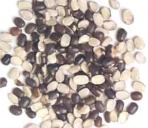


Urid dhal Chick Peas Long Beans



